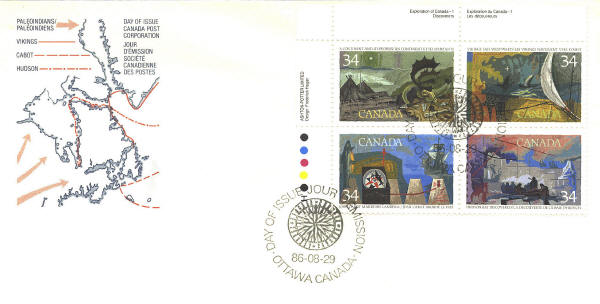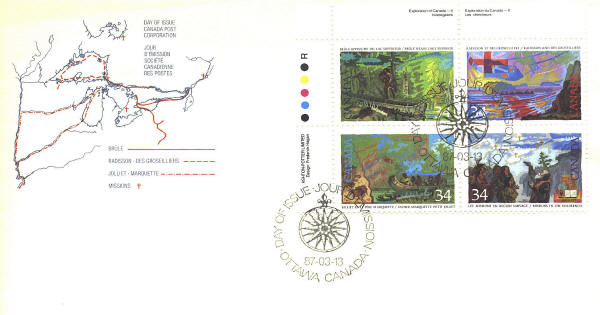|
Exploration of Canada ~ Discoverers
Archaeologists believe
that the Indians and the Inuit migrated from Asia across the Bering
Strait to explore most of Canada. The first known Europeans to visit
Canada were the Vikings who landed in northern Newfoundland about 1000
AD, although there is
some evidence that they may have been preceded by Buddhist monks from
China in 458 AD or by
Irish monks in the sixth century.
Looking for a western route to Asia on behalf of
England, John Cabot (Giovanni Caboto) discovered the North American
continent in 1497. Cabot’s discovery led to the establishment of a
European fishery on the Grand Banks of Newfoundland. His sailing
directions were probably used by Jacques Cartier on his 1534 and 1535
voyages.
The British explorer Henry Hudson, helped discover the
north-eastern part of the continent as the search for a North-West
Passage to Asia continued. After John Davis’s three voyages (1585-7)
delineated much of the Davis Strait region, Hudson traversed much of
the Davis Strait region, Hudson traversed Hudson Strait and discovered
Hudson Bay in 1610.
The cachet design is based on a part of Luke “North
West” Foxe’s map of 1635. The native peoples’ migration routes and
early European explorers’ routes are shown in relation to landmasses
as they were known at the time. Stylized maps are also shown on the
stamps

Investigators
The explorers honoured in
this second set of stamps in the Exploration of Canada series
investigated the eastern interior of the North American continent.
Étienne Brûlé (1592-1633) is representative of the first coureurs
des bois who thoroughly explored New France during the seventeenth
century. Brûlé lived among the Huron and Iroquois, and made extensive
discoveries throughout the Great Lakes region.
Pierre-Esprit Radisson (1640-1710) and Médard Chouart
des Groseilliers(1618-1696) were the first Europeans to explore Lake Superior in
detail. Their discoveries and conception of transportation routes for
the fur trade led to the founding of the Hudson’s Bay Company.
Louis Joliet (1645-1700) was commissioned by the
intendant, Talon, to explore the Mississippi River via the Great
Lakes, in search of a passage to Asia. Father Jacques Marquette, a
Jesuit missionary, acted as interpreter for Jolliet on the expedition
to the Mississippi. Jolliet later explored Lake St. John, the St.
Lawrence River, the Gulf of St. Lawrence and the Labrador coast. Many
Jesuits and Sulpicians who founded missions in the wilderness kept
careful accounts of explorations and discoveries as they lived and
worked among the native peoples.
The cachet is based on part of Coronelli’s 1688 map of
western New France. Stylized maps also appear on the stamps.

The descriptions are from the first day covers issued
by Canada Post.
Two additional covers and sets of stamps were
issued in 1988 and 1989. The first recognized 18th century explorers,
Anthony Henday, George Vancouver, Simon Fraser, and John Palliser (SCN
1199-1202). The second, Explorers of the North, Matonabbee, Sir John
Franklin, Joseph Burr, and Vilhjalmer Stefansson (1233-1236).


 |
